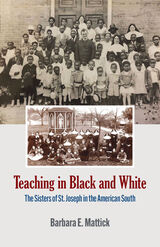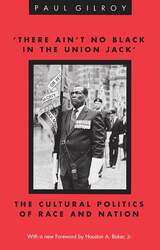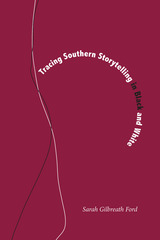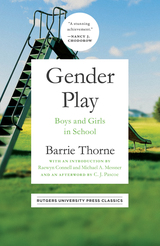101 books about Black and 3
start with T
101 books about Black and 3
101 books about Black
3 start with T start with T
3 start with T start with T

Teaching in Black and White
The Sisters of St. Joseph in the American South
Barbara E. Mattick
Catholic University of America Press, 2022
Teaching in Black and White: The Sisters of St. Joseph in the American South discusses the work of the Sisters of St. Joseph of (the city of) St. Augustine, who came to Florida from France in 1866 to teach newly freed blacks after the Civil War, and remain to this day. It also tells the story of the Sisters of St. Joseph of Georgia, who sprang from the motherhouse in St. Augustine.
A significant part of the book is a comparison of the Sisters of St. Josephs’ work against that of their major rivals, missionaries from the Protestant American Missionary Association. Using letters the Sisters wrote back to their motherhouse in France, the book provides rare glimpses into the personal and professional (pun intended) lives of these women religious in St. Augustine and other parts of Florida and Georgia, from the mid-nineteenth century through the era of anti-Catholicism in the early twentieth century South. It carries the story through 1922, the end of the pioneer years of the Sisters of St. Josephs’ work in Florida, and the end of Sisters of St. Joseph of Georgia’s existence as a distinct order. Through the lenses of Catholicism, Florida and Southern history, gender, and race, the book addresses the Protestant concept of domesticity and how it was reinforced in Catholic terms by women who seemingly defied the ideal. It also relates the Sisters’ contributions in shaping life in the South during Reconstruction as they established elite academies and free schools, created orphanages, ministered to all during severe yellow fever epidemics, and fought the specter of anti-Catholicism as it crept across the rural regions of the country. To date, little has been written about Catholics in the South, much less the women religious who served there. This book helps to fill that gap.
Teaching in Black and White provides rare glimpses into the personal and professional lives of women religious in Florida and Georgia, from the mid-nineteenth to early twentieth-century.
[more]

'There Ain't no Black in the Union Jack'
The Cultural Politics of Race and Nation
Paul Gilroy
University of Chicago Press, 1991
Gilroy demonstrates the enormous complexity of racial politics in England today. Exploring the relationships among race, class, and nation as they have evolved over the past twenty years, he highlights racist attitudes that transcend the left-right political divide. He challenges current sociological approaches to racism as well as the ethnocentric bias of British cultural studies.
"Gilroy demonstrates effectively that cultural traditions are not static, but develop, grow and indeed mutate, as they influence and are influenced by the other changing traditions around them."—David Edgar, Listener Review of Books.
"A fascinating analysis of the discourses that have accompanied black settlement in Britain. . . . An important addition to the stock of critical works on race and culture."—David Okuefuna, Chicago Tribune
"Gilroy demonstrates effectively that cultural traditions are not static, but develop, grow and indeed mutate, as they influence and are influenced by the other changing traditions around them."—David Edgar, Listener Review of Books.
"A fascinating analysis of the discourses that have accompanied black settlement in Britain. . . . An important addition to the stock of critical works on race and culture."—David Okuefuna, Chicago Tribune
[more]

Tracing Southern Storytelling in Black and White
Sarah Gilbreath Ford
University of Alabama Press, 2014
Explores how both black and white southern writers such as Joel Chandler Harris, Charles Chesnutt, Zora Neale Hurston, William Faulkner, Eudora Welty, Ralph Ellison, Ellen Douglas, and Ernest Gaines have employed oral storytelling in literature
Tracing Southern Storytelling in Black and White is a study of the historical use of oral storytelling by southern writers in written works. In each chapter, Sarah Gilbreath Ford pairs a white and an African American writer to highlight points of confluence in black and white southern oral traditions. She argues that the connections between white and African American southern writers run deeper than critics have yet explored, and she uses textual comparisons to examine the racial mixing of oral culture.
On porches, in kitchens, and on the pages of their work, black and white southerners exchanged not just stories but strategies for telling stories. As a boy, Joel Chandler Harris listened to the stories of African American slaves, and he devised a framework to turn the oral stories into written ones. Harris’s use of the frame structure influenced how Charles Chesnutt recorded oral stories, but it led Alice Walker to complain that her heritage had been stolen. Mark Twain listened to African American storytellers as a child. His use of oral dialects then impacts how Ralph Ellison and William Faulkner employ oral storytelling and how Toni Morrison later writes in response to Faulkner. The interactions are not linear, not a chain of influence, but a network of interactions, borrowings, and revisions.
Ford’s pairings lead to new readings that reveal how the writers employ similar strategies in their narratives, due in part to shared historical context. While Zora Neale Hurston and William Faulkner, for example, use oral storytelling in the 1930s to examine the fear of racial mixing, Ellen Douglas and Ernest Gaines use it in the 1970s to build bridges between the races. Exploring the cultural crossing that occurs in the use of oral storytelling, Ford offers a different view of this common strategy in southern narrative and a new perspective on how culture is shared.
Tracing Southern Storytelling in Black and White is a study of the historical use of oral storytelling by southern writers in written works. In each chapter, Sarah Gilbreath Ford pairs a white and an African American writer to highlight points of confluence in black and white southern oral traditions. She argues that the connections between white and African American southern writers run deeper than critics have yet explored, and she uses textual comparisons to examine the racial mixing of oral culture.
On porches, in kitchens, and on the pages of their work, black and white southerners exchanged not just stories but strategies for telling stories. As a boy, Joel Chandler Harris listened to the stories of African American slaves, and he devised a framework to turn the oral stories into written ones. Harris’s use of the frame structure influenced how Charles Chesnutt recorded oral stories, but it led Alice Walker to complain that her heritage had been stolen. Mark Twain listened to African American storytellers as a child. His use of oral dialects then impacts how Ralph Ellison and William Faulkner employ oral storytelling and how Toni Morrison later writes in response to Faulkner. The interactions are not linear, not a chain of influence, but a network of interactions, borrowings, and revisions.
Ford’s pairings lead to new readings that reveal how the writers employ similar strategies in their narratives, due in part to shared historical context. While Zora Neale Hurston and William Faulkner, for example, use oral storytelling in the 1930s to examine the fear of racial mixing, Ellen Douglas and Ernest Gaines use it in the 1970s to build bridges between the races. Exploring the cultural crossing that occurs in the use of oral storytelling, Ford offers a different view of this common strategy in southern narrative and a new perspective on how culture is shared.
[more]
READERS
Browse our collection.
PUBLISHERS
See BiblioVault's publisher services.
STUDENT SERVICES
Files for college accessibility offices.
UChicago Accessibility Resources
home | accessibility | search | about | contact us
BiblioVault ® 2001 - 2024
The University of Chicago Press









